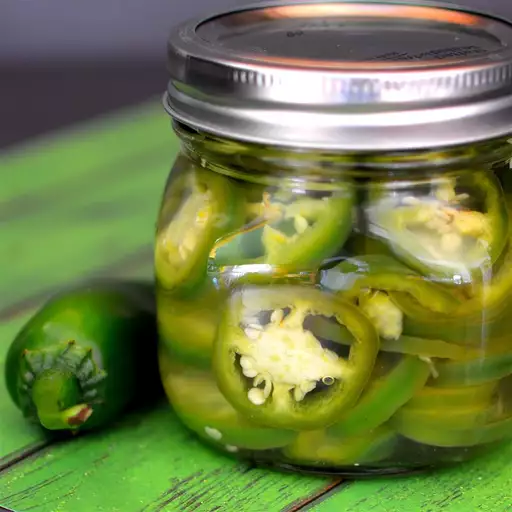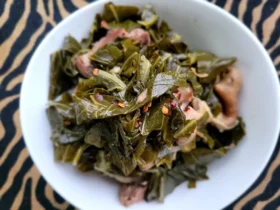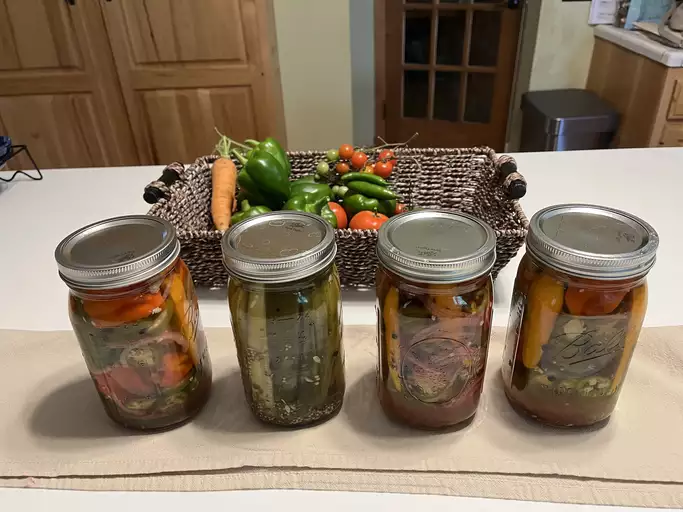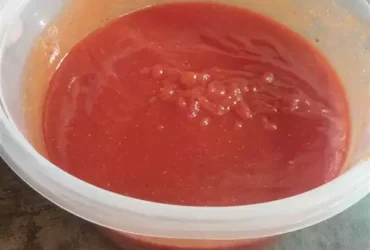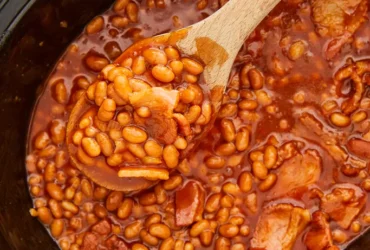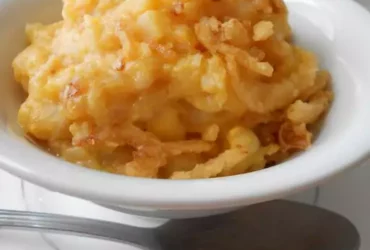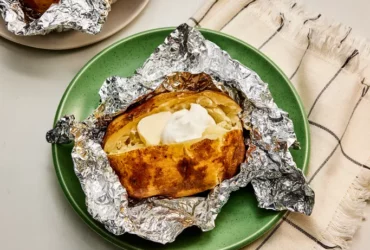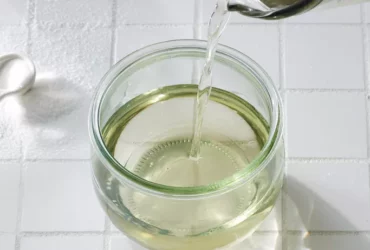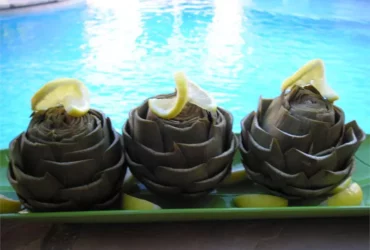Ingredients
Jalapeños Peppers
Jalapeños peppers are a crucial ingredient in many cuisines, particularly in Mexican and Southwestern American cooking. They are a type of hot pepper that belongs to the Capsicum annuum species.
The key characteristics of jalapeño peppers include their green or sometimes purple color, elongated shape, and typically 2-3 inch length. They have a moderate level of heat, with a Scoville heat unit (SHU) rating ranging from 2,500 to 8,000.
Jalapeños are native to Mexico but are now grown in many parts of the world. They thrive in warm climates and well-drained soil, which makes them suitable for home gardens.
The flavor profile of jalapeño peppers is often described as sweet and smoky, with a slightly bitter undertone. When cooked or pickled, they add a depth of flavor to various dishes.
In terms of nutritional value, jalapeños are low in calories and rich in vitamins A and C, potassium, and antioxidants. However, eating them can cause irritation and discomfort due to their capsaicin content.
To use jalapeños in cooking, you should handle them carefully, as the oils that cause the burning sensation can be released through contact with your skin or eyes. Always wear gloves when chopping or slicing jalapeños, especially if you have sensitive skin.
Now, let’s focus on pickling jalapeños for our recipe:
You will need
- 1 lb jalapeño peppers
- 1 cup (250ml) white vinegar
- 1/2 cup (125ml) water
- 1 tablespoon salt
- 1 tablespoon granulated sugar
Pickling spice or whole spices, such as dill seeds, coriander seeds, and mustard seeds
To prepare the jalapeños
- Wash the peppers thoroughly to remove any dirt or debris.
- Using a vegetable peeler, peel the peppers if desired for a smoother texture. Otherwise, leave them with their natural skin intact.
- Trim both ends of each pepper and remove seeds and membranes by cutting around them carefully with a sharp knife or using a specialized tool.
To create the brine
- In a medium saucepan, combine the vinegar, water, salt, sugar, and pickling spice. Bring to a boil over high heat, stirring occasionally.
- Reduce heat to medium-low (or low) once boiling point is reached, allowing the brine to simmer gently for 5-10 minutes or until it reaches your desired consistency.
- To assemble and store the pickled jalapeños
- In a clean glass jar with a tight-fitting lid, pack the prepared jalapeños tightly but gently to prevent damage.
- Pour the cooled brine over the peppers, ensuring they are completely covered. If necessary, add more vinegar or water to fill the jar.
- Seal the jar and store it in the refrigerator at a consistent temperature below 40°F (4°C). Allow the pickles to mature for at least 24 hours before serving. Enjoy your homemade pickled jalapeños!
You will need 46 Jalapeño peppers for this recipe.
The ingredients required for a traditional pickled jalapeños recipe are diverse and essential to achieve the desired flavor and texture.
Here is a comprehensive list of the necessary ingredients:
Jalapeño Peppers
The primary ingredient, 46 in total, will be used for this recipe. These can be sourced from a local market or grown at home.
Vegetable Oil
A neutral-tasting oil with a high smoke point is required for frying the jalapeños. About 1/2 cup should be enough.
Salt
Unrefined salt is recommended to add depth and preserve the jalapeños. Use about 1 tablespoon per jar.
Granulated Sugar
This adds sweetness and helps balance the heat of the jalapeños. About 2 tablespoons should be sufficient for this recipe.
Garlic
Minced garlic is a key component in pickling liquid. Use about 3 cloves per jar.
Black Peppercorns
Whole black peppercorns add a subtle yet distinctive flavor to the pickled jalapeños. About 1 teaspoon should be enough.
Cider Vinegar
A high-quality cider vinegar with an acidity level of about 5% is ideal for this recipe. Use about 1 cup per jar.
Water
The ratio of water to pickling liquid should be around 50:5 This ensures the jalapeños are fully submerged in the brine.
Pickling Spice Blend
A pre-mixed blend containing mustard seeds, coriander seeds, and other spices can add complexity to the recipe. Use according to package instructions or about 1 teaspoon per jar.
These ingredients will be combined in various proportions to create a rich and flavorful pickled jalapeños recipe that’s sure to impress friends and family.
Salt and Sugar
In order to prepare pickled jalapeños, several ingredients are required, some of which serve a crucial function while others enhance the flavor and texture of the final product.
One essential ingredient is the salt, typically in the form of granulated salt or kosher salt. Salt serves as a preservative, helping to prevent the growth of unwanted bacteria and other microorganisms that can spoil the pickled jalapeños.
Sugar, another crucial ingredient, adds sweetness to balance out the heat from the jalapeños. It also plays a role in caramelizing and browning reactions when cooking with acidic ingredients such as vinegar.
The type of sugar used can impact the flavor profile of the pickled jalapeños. Some common types include white granulated sugar, brown sugar, honey, or even agave nectar for those looking to reduce refined sugars.
Jalapeños themselves are a key ingredient in this recipe. Fresh and firm, they add an intense spicy kick due to their capsaicin content. The amount used can be adjusted based on personal taste preferences for spice level.
Vinegar is another fundamental component of pickled jalapeños. It adds acidity, helps preserve the peppers, and contributes a tangy flavor to the final product. Common types include white vinegar, apple cider vinegar, or white wine vinegar.
Other ingredients like garlic, mustard seeds, coriander seeds, cumin powder, and red pepper flakes can be used to enhance the flavor of pickled jalapeños. Some people may choose to add a splash of hot sauce for extra heat.
The type of vinegar used will influence the overall character of the pickled jalapeños. For instance, using apple cider vinegar can introduce fruity undertones while white vinegar contributes a cleaner taste.
The ratio between salt and sugar is also important in this recipe. A balance between the two helps to create an optimal flavor profile without overpowering the delicate sweetness or spiciness of the jalapeños.
Use a mixture of salt and sugar to create the pickling solution.
To make the pickling solution for our pickled jalapeños, we need to create a mixture that balances sweetness and saltiness.
The ratio of sugar to salt will play a crucial role in determining the flavor profile of our pickles. A general guideline is to use:
- 1 cup (250g) granulated white sugar
- 1/2 cup (120g) kosher salt or pickling salt
The sugar will help to balance out the acidity and heat from the jalapeños, while the salt will enhance their flavor and help to preserve them.
We’ll use a mixture of granulated white sugar and kosher salt for this recipe. The white sugar adds a sweetness that complements the heat of the jalapeños, while the kosher salt provides a savory depth of flavor.
Acetic Acid
The ingredients used to make pickled jalapeños are crucial for achieving that perfect balance of flavors and textures. When it comes to the brine, a mixture of vinegar, water, salt, and other seasonings, acetic acid plays a vital role.
Acetic acid, also known as ethanoic acid or vinegar acid, is a naturally occurring compound found in fermented plant materials such as fruits, vegetables, and grains. It’s the main active component responsible for giving pickles their characteristic sour taste and aroma.
In the context of this Pickled Jalapeños Recipe, acetic acid will be added to the brine in the form of vinegar, which can be white wine vinegar, apple cider vinegar, or white distilled vinegar. The choice of vinegar may vary depending on personal preference or the desired flavor profile.
The acidity level of the vinegar is also crucial, as it affects the overall balance of flavors and the preservation process. A higher acidity level will help to prevent the growth of bacteria and other microorganisms, ensuring that your pickles stay fresh for a longer period.
When using acetic acid or vinegar in cooking, it’s essential to understand its properties and how it interacts with other ingredients. Acetic acid has a strong impact on flavors, aromas, and textures, so it’s recommended to use it judiciously to avoid overpowering your dishes.
In the case of pickled jalapeños, acetic acid will help to balance the heat from the peppers and add depth to the flavor profile. It’ll also contribute to the development of a tangy, slightly sour taste that complements the sweetness of the peppers.
When combining vinegar with other ingredients in your brine, remember that the ratio of acidity to salt is critical. A general rule of thumb is to use a ratio of 1 part acid (vinegar) to 3-4 parts water and 2% salt by weight. However, this may vary depending on personal preference or recipe requirements.
Keep in mind that acetic acid can also be used as an antimicrobial agent to extend the shelf life of your pickled jalapeños. Its preservative properties will help to prevent spoilage and ensure that your pickles remain fresh for a longer period.
To incorporate acetic acid effectively into your Pickled Jalapeños Recipe, make sure to use high-quality vinegar that is free from contaminants or additives. Also, be mindful of the acidity level and adjust it according to your taste preferences.
A tablespoon of white vinegar or lemon juice can be used as an alternative to acetic acid.
The ingredients for pickling jalapeños typically include a combination of acidic and sweet components to create a tangy and flavorful condiment.
One key ingredient in this recipe is acetic acid, which is commonly found in white vinegar or lemon juice. However, if you don’t have these items on hand, there are alternative options available.
A tablespoon of white vinegar or lemon juice can be used as a substitute for acetic acid to create a similar acidic flavor profile in the pickling liquid.
In this Pickled Jalapeños Recipe, the use of acetic acid, white vinegar, or lemon juice serves to balance out the sweetness from other ingredients and help preserve the jalapeños by creating an acidic environment that inhibits the growth of bacteria.
When using white vinegar or lemon juice as a substitute, it’s essential to note that they will provide a slightly different flavor profile compared to acetic acid. White vinegar has a strong, pungent taste, while lemon juice offers a bright and citrusy flavor.
In the context of this Pickled Jalapeños Recipe, the choice between using white vinegar, lemon juice, or acetic acid ultimately comes down to personal preference and the desired flavor profile for your pickled jalapeños.
It’s also worth considering that some recipes may call for a combination of these ingredients to achieve the perfect balance of flavors. In such cases, using all three – white vinegar, lemon juice, and acetic acid – can help create a rich and complex flavor profile.
In conclusion, while acetic acid is the traditional choice for pickling jalapeños, white vinegar or lemon juice can be used as suitable alternatives to achieve a similar acidic flavor. The choice between these options ultimately depends on your personal taste preferences and the desired flavor profile of your pickled jalapeños.
Instructions
Cleaning and Preparation
To successfully execute a pickled jalapeños recipe, it’s essential to begin with proper instructions on cleaning and preparation.
The first step involves selecting the right jalapeños peppers. Choose fresh, plump peppers with no signs of mold or decay. Make sure they have no visible cracks or soft spots that could affect their flavor or texture during the pickling process.
Next, you’ll need to prepare the peppers for canning. To do this, start by washing your hands thoroughly before handling the jalapeños. Then, gently wash the peppers under cold running water, making sure to remove any dirt or debris from the surface.
Rinse the peppers again and pat them dry with a clean towel. This will help prevent bacteria growth during the pickling process. You can also trim the stems of the jalapeños if they’re particularly long, but be careful not to bruise the pepper in the process.
Once your peppers are cleaned and prepared, you’ll need to slice or chop them according to your desired level of spiciness. Slice the jalapeños thinly for a milder flavor or chop them more coarsely for a hotter pickled snack.
Regardless of how you choose to slice your jalapeños, be sure to wear gloves when handling hot peppers to prevent skin irritation and burning eyes. This will also help keep your hands clean and make the pickling process smoother in the long run.
With your peppers prepared, move on to the next step: creating a brine solution for pickling. This typically involves mixing together vinegar, water, salt, sugar, and any desired spices or seasonings in a saucepan over low heat.
Bring the brine mixture to a simmer, then carefully pour it into clean, hot jars, leaving about 1/4 inch of space at the top. Pack the sliced or chopped jalapeños into the jars, making sure they’re not overlapping or touching each other in the jar.
Wipe down any spills with a clean cloth and immediately seal the jars by screwing on tight-fitting lids. This will ensure that your pickled jalapeños remain fresh for several months when stored properly in the refrigerator.
Wash the Jalapeños in cold water, pat them dry with a paper towel. Remove the stems and seeds from the peppers.
The first step in making pickled jalapeños involves preparing the peppers themselves. To begin, wash the jalapeños in cold water. This will help to remove any dirt or debris that may be on the surface of the peppers.
Next, use a paper towel to gently pat the peppers dry. This is an important step, as excess moisture can affect the pickling process and lead to an undesirable texture.
Now it’s time to remove the stems and seeds from the jalapeños. To do this, carefully cut off the top of each pepper, just above where the stem meets the body. Then, use a spoon or your fingers to scoop out the seeds and membranes inside the pepper. Be careful not to puncture the walls of the pepper as you’re doing this, as this can lead to spoilage.
Pickling Solution
Pickling is a popular method of preserving food, particularly vegetables and fruits, that involves soaking them in a solution of water, salt, and acidic ingredients like vinegar or lemon juice.
This process creates an environment that inhibits the growth of bacteria, mold, and yeast, allowing the pickled items to be stored for extended periods without spoiling.
Pickling Solution Ingredients
Water
The base component of the pickling solution, making up about 75% of its volume.
Salt (Sodium Chloride)
Provides flavor, helps preserve food by drawing out moisture, and inhibits bacterial growth. Use a non-iodized salt for canning purposes.
Acidic Ingredient (Vinegar or Lemon Juice):
Vinegar:
- Malt vinegar, white vinegar, or apple cider vinegar.
- Select a vinegar that complements the flavor of the food being pickled.
Lemon Juice:
- A common choice for pickling because it adds a bright, citrusy flavor.
Spices and Seasonings
Various spices and seasonings can be added to the pickling solution for extra flavor. This could include garlic, dill, mustard seeds, coriander seeds, or any other spice that complements the taste of the food being pickled.
Sugar or Honey (optional): Small amounts of sugar or honey can be added to balance out the acidity and enhance the flavor of the pickling solution.
Pickling Solution Ratios
The ideal ratio for a basic pickling solution is:
- 4 parts water
- 1 part vinegar (white or apple cider)
- A pinch of salt and any additional spices or seasonings as desired.
Tips for Making the Perfect Pickling Solution
- Use fresh and good quality ingredients. This will ensure the pickled food tastes great and lasts longer.
- Avoid over-salting the solution, as this can make it difficult to adjust the seasoning later on.
- Keep the solution refrigerated at all times. Once pickling is complete, store the containers in the refrigerator to slow down any spoilage.
Pickled Jalapeños Recipe
This recipe uses a combination of jalapeños peppers and onions that are soaked in a flavorful pickling solution. The process involves slicing the jalapeños thinly, packing them into jars with sliced onions, and then pouring the hot pickling solution over the top.
Ingredients
- 12 large jalapeño peppers
- 1 medium onion
- Pickling solution (see above)
To prepare the pickled Jalapeños, follow these steps
Slice the jalapeños and onions thinly, placing them in a large bowl as you work.
Combine the sliced vegetables with your desired spices or seasonings, mixing well to ensure everything is evenly coated.
Pack the mixture into clean glass jars or containers, leaving about 1 inch of space at the top.
Prepare the pickling solution by combining water, vinegar (or lemon juice), salt and any additional spices in a saucepan. Bring to a boil over high heat, stirring until the salt is dissolved.
Pour the hot pickling solution over the vegetables, making sure they are completely covered.
Allow the mixture to cool slightly, then seal the jars or containers and refrigerate. The pickled Jalapeños will be ready to eat in a few hours and can be stored in the refrigerator for several weeks.
This recipe creates a deliciously spicy and tangy condiment that is perfect for topping tacos, sandwiches, salads, and more. Enjoy your homemade pickled jalapeños!
Combine 1 cup of water, salt, sugar, and acetic acid (or vinegar) in a saucepan. Bring to a boil, then reduce heat to medium low and let it simmer for about 10 minutes.
To create a batch of Pickled Jalapeños, you will need to follow a series of steps that require attention to detail and a gentle touch.
First, combine 1 cup of water with an equal amount of salt. The salt serves not only as a flavor enhancer but also as a preservative to inhibit the growth of bacteria and other microorganisms.
Next, add sugar to the mixture. Sugar plays a crucial role in balancing out the acidity of the vinegar and contributes to the overall sweet and tangy flavor profile of the pickled jalapeños.
Finally, add 2-3 tablespoons of acetic acid (or white vinegar) to the saucepan. Acetic acid is responsible for the characteristic sour taste of vinegar, which will help to give the pickles their signature tanginess.
To bring this mixture to life, place it in a medium-sized saucepan over high heat and stir occasionally until the contents reach a rolling boil.
Once boiling, reduce the heat to medium-low (or about 3-4 on a scale of 1-10) and allow the mixture to simmer for approximately 10 minutes. This process is crucial in developing the flavors and allowing the pickles to absorb all the necessary ingredients.
During this time, occasionally check on the saucepan to ensure that it does not boil over or dry out. You may need to adjust the heat accordingly to prevent these issues from arising.
After the 10-minute mark has passed, carefully remove the saucepan from the stovetop and let the contents cool slightly before serving.
Soaking the Peppers
To ensure that the peppers are properly soaked and ready for pickling, it’s essential to follow a series of steps carefully.
Begin by preparing a bowl large enough to accommodate the jalapeño peppers. You will want to add cold water to this bowl, making sure that the water level is deep enough to cover all the peppers completely.
The next step involves adding a pinch of salt to the water. This salt helps to draw out excess moisture from the peppers and also contributes to their preservation.
Once you’ve added the salt, gently submerge each pepper in the water. It’s crucial not to overcrowd the bowl, as this can prevent even soaking of all the peppers.
Let the peppers soak for a minimum of 30 minutes. This allows them to soften and become more pliable, which will make them easier to slice or chop when you’re ready to prepare your pickled jalapeños recipe.
After 30 minutes have passed, remove the peppers from the water with a slotted spoon or tongs, making sure not to spill any of the liquid. Rinse each pepper gently under cold running water to remove excess salt and moisture.
Pat each pepper dry with paper towels before slicing or chopping them for your pickled jalapeños recipe. This helps to prevent sogginess and ensures that your peppers stay crispy throughout the cooking process.
By following these simple steps, you can ensure that your jalapeños are properly soaked and ready for pickling. Remember, patience is key when it comes to soaking peppers in salt water, so take your time and let them sit as long as necessary before rinsing and patting dry.
Place the Jalapeños peppers into a clean glass jar or container with a lid, leaving enough space between them. Pour the pickling solution over the peppers.
The art of creating pickled jalapeños requires a combination of attention to detail, patience, and precise execution. The first step involves carefully selecting the appropriate vessel for preserving these spicy gems. A clean glass jar or container with a lid is an essential tool in this process.
It’s crucial to choose a container that will allow for enough space between each jalapeño pepper. Overcrowding can lead to uneven pickling, resulting in some peppers being more sour than others. By leaving sufficient space between them, you’ll achieve a balanced flavor and texture.
The next step is to prepare the jalapeños for pickling. Typically, this involves trimming off any stems or leaves that may be present on the peppers. This will ensure they fit neatly into the jar and create a clean, uncluttered appearance.
Once the jars are ready, it’s time to pour the pickling solution over the peppers. The pickling liquid is a mixture of vinegar, water, salt, and spices that creates the perfect environment for preserving the jalapeños. This solution not only adds flavor but also helps to prevent spoilage.
When filling the jar with the pickling solution, be sure to leave enough room at the top for the peppers to absorb the liquid evenly. Avoid overfilling, as this can lead to a buildup of excess liquid and create an environment conducive to mold growth.
Notes
Time and Temperature
When it comes to making pickled jalapeños, notes on time and temperature are crucial for achieving the perfect level of acidity, texture, and flavor.
Note-Taking Essentials
Jalapeño Pepper Preparation
Slice or chop the jalapeños into uniform pieces to ensure even pickling. Make sure to wear gloves when handling hot peppers to avoid skin irritation.
Canning and Sterilization
Wash your jars, lids, and utensils in hot soapy water, then sterilize them in a pot of boiling water for at least 10 minutes to prevent contamination.
Syrup Preparation
Combine the vinegar, salt, sugar, and spices in a saucepan. Bring the mixture to a boil over medium-high heat, stirring occasionally, until the salt and sugar have dissolved.
Temperature Control
The temperature at which you store your pickled jalapeños is crucial for their safety and quality. The ideal storage temperature is between 32°F (0°C) and 40°F (4°C). This prevents the growth of bacteria, yeast, and mold that can spoil the pickles.
Time and Temperature Relationship
The length of time you store your pickled jalapeños at a given temperature affects their texture, flavor, and acidity level. Here’s a general guideline:
Refrigerated Pickles (32°F to 40°F or 0°C to 4°C)
Store for up to 6 months. The pickles will retain their crunchiness and flavor.
Canned Pickles (stored at room temperature, approximately 70°F or 21°C)
Can be stored for up to 12 months. However, the texture may become softer over time due to the high heat during canning.
Freezer Storage: Store pickled jalapeños in airtight containers or freezer bags at 0°F (-18°C) for up to 8 months. The pickles will retain their crunchiness and flavor.
Conclusion
Making delicious pickled jalapeños requires attention to time, temperature, and storage conditions. By following these guidelines, you’ll be able to create a batch of tangy, crunchy, and flavorful pickles that will elevate your meals and snacks to the next level.
Refrigerate the Pickled Jalapeños for at least 24 hours before consuming. Store in an airtight container in the refrigerator.
Pickled jalapeños are a fantastic condiment to have in your fridge, adding a burst of spicy flavor to any dish. For optimal taste and texture, it’s essential to allow them to chill in the refrigerator for at least 24 hours before consumption.
This step is crucial because the pickling process involves allowing the jalapeños to sit in a brine solution that draws out their natural flavors and intensifies their heat. During this time, the acids in the brine, such as vinegar or lemon juice, help to preserve the peppers and prevent bacterial growth.
After 24 hours have passed, you can transfer the pickled jalapeños to an airtight container. This will prevent any air from getting into the container and causing off-flavors or spoilage. A plastic or glass container with a tight-fitting lid is ideal for storing pickled jalapeños.
Before sealing the container, make sure that it’s clean and dry. Any residual moisture or bacteria can contaminate the pickles and affect their quality. You should also check that the container is airtight by checking if it seals properly before refrigerating the pickled jalapeños.
Finally, store the container in the refrigerator at a consistent temperature below 40°F (4°C). This will slow down any further fermentation or spoilage and ensure that your pickled jalapeños remain fresh for several weeks.
Cleaning and Safety
When working with notes while preparing a recipe like Pickled Jalapeños, it’s essential to keep track of crucial information such as ingredient quantities, cooking times, and storage instructions.
A good note-taking system involves categorizing and prioritizing tasks to ensure that you don’t miss any critical steps. For instance, if you’re using a recipe with multiple components, consider breaking down the preparation process into smaller, manageable tasks.
When cleaning your workspace while making Pickled Jalapeños, focus on sanitizing all surfaces and utensils that come into contact with food. This includes your hands, countertops, cutting boards, knives, and storage containers.
Cleaning and sanitizing not only prevents the spread of bacteria but also ensures a clean and safe environment for food preparation. Regularly washing your hands with soap and water is essential in this context, as well as sanitizing any utensils or equipment that are used to handle raw ingredients or cooked foods.
When working with hot liquids, such as vinegar, which may be present when making Pickled Jalapeños, always exercise caution to avoid scalding. This can be achieved by wearing protective gear, such as oven mitts or a pair of heat-resistant gloves, and ensuring that the work surface is heat-resistant and secure.
In addition to proper cleaning and note-taking practices, maintaining a clean workspace while making Pickled Jalapeños also means being mindful of your surroundings. For instance, if you’re using a gas stove, keep an eye on the burner’s temperature to prevent accidents and ensure that flammable materials are kept away from heat sources.
To further minimize risks when preparing Pickled Jalapeños, consider following basic food safety guidelines. These may include proper handling and storage of ingredients, cooking food to a safe internal temperature (165°F or higher), and avoiding cross-contamination by using separate cutting boards for raw and cooked foods.
Overall, maintaining clean workspaces and taking accurate notes while preparing Pickled Jalapeños is crucial for producing high-quality results and minimizing risks in the kitchen.
Clean your equipment thoroughly after handling hot peppers to avoid any irritation or discomfort.
Cleaning your equipment thoroughly after handling hot peppers, such as jalapenos, is crucial to avoid any irritation or discomfort.
The oils found in hot peppers can cause skin irritation and even burning sensations if they come into contact with other surfaces, including metal utensils, cutting boards, and countertops.
To prevent this from happening, make sure to wash your hands thoroughly with soap and water after handling the jalapenos.
Then, proceed to clean any equipment that may have come into contact with the peppers, such as:
- Cutting boards
- Metal utensils (e.g. knives, spatulas)
- Countertops
- Pots and pans
Use soap and warm water to wipe down each item thoroughly.
If you’re using a cutting board made of wood or plastic, make sure to sanitize it with a solution of equal parts water and white vinegar after cleaning.
This will help remove any lingering oils from the jalapenos and prevent any potential irritation or discomfort in the future.
Experimentation
The art of experimentation in language is an essential aspect of culinary innovation, particularly when it comes to recipes such as the classic pickled jalapeños. The process of experimentation allows cooks to push the boundaries of traditional techniques and ingredient combinations, resulting in unique flavor profiles that can elevate a dish from ordinary to extraordinary.
One of the most crucial aspects of experimenting with language in cooking is the use of descriptive words and phrases. For instance, instead of simply saying “add salt,” a cook might say “sprinkle a pinch of flaky sea salt” or “season with a generous helping of kosher salt.” These subtle differences in wording can greatly impact the way we perceive a dish, making it more engaging and immersive for the palate.
Another key aspect of experimentation in language is the use of metaphors and analogies. For example, instead of simply saying “the pickled jalapeños are spicy,” a cook might say “the pickled jalapeños pack a punch of fiery flavor” or “they ignite a burning passion on the palate.” These creative comparisons can add layers of depth and meaning to a dish, making it more memorable and impactful for diners.
The use of sensory language is also essential in cooking, particularly when it comes to recipes like pickled jalapeños. Instead of simply listing ingredients and instructions, cooks can use vivid descriptions to evoke the sights, smells, and tastes of a dish. For instance, a cook might describe the “deep crimson hue” of the pickled peppers or the “pungent aroma” of the vinegar.
Finally, experimentation in language can also involve exploring different formats and structures for recipe writing. Instead of traditional paragraph-based recipes, cooks might use lists, bullet points, or even poetry to convey their message. For example, a cook might write a poem about the pickled jalapeños, using each line to highlight a key ingredient or technique.
In conclusion, experimentation in language is an essential aspect of cooking and recipe writing. By pushing the boundaries of descriptive words, metaphors, sensory language, and format, cooks can create unique and engaging recipes that inspire and delight diners. Whether it’s a classic pickled jalapeños recipe or something entirely new, the art of experimentation in language can elevate any dish to new heights.
Feel free to experiment with different types of peppers, spices, or herbs to create unique variations of this recipe.
The art of pickling jalapeños is a timeless tradition that allows you to capture the fiery spirit of these delicious peppers and enjoy them throughout the year. With a few simple ingredients and some patience, you can create your own homemade pickled jalapeños that will elevate any dish or add a spicy kick to your favorite snacks.
To begin, you’ll need:
- 4-6 large jalapeño peppers
- 1 cup (250 ml) of vinegar (white wine, apple cider, or white distilled work well)
- 1/2 cup (125 g) granulated sugar
- 1/2 teaspoon salt
- Optional: garlic cloves, dill sprigs, coriander seeds, or other spices and herbs to suit your taste
First, prepare the jalapeños by slicing off the stems and slitting them lengthwise. Remove any seeds or membranes if you prefer a milder flavor. Pack the peppers into clean glass jars, leaving about 1/2 inch (1 cm) of space at the top.
Mix together the vinegar, sugar, salt, and any desired spices or herbs in a saucepan. Bring the mixture to a boil over medium heat, stirring until the sugar dissolves.
Reduce the heat to low and simmer for 5-10 minutes, allowing the flavors to meld together. Remove from heat and carefully pour the hot pickling liquid over the jalapeños in the jars.
Seal the jars tightly and let them cool to room temperature. Store the pickled jalapeños in the refrigerator, where they will keep for several weeks or even months.
Feel free to experiment with different types of peppers, spices, or herbs to create unique variations of this recipe. Some ideas include:
- Pickled Habaneros: use habanero peppers for a more intense heat
- Sriracha Pickles: add minced garlic and grated ginger for an Asian-inspired flavor
- Mild Jalapeños: reduce the number of jalapeños or omit the seeds and membranes for a milder flavor
- Garlic Dill Pickles: add a few cloves of minced garlic and some fresh dill sprigs for a classic pickle flavor
Whether you enjoy your pickled jalapeños as a snack, a topping for tacos or grilled meats, or a condiment to spice up your favorite dishes, these homemade pickles will never disappoint. Happy pickling!
- Best Datanyze Alternatives for 2025 - April 24, 2025
- Best Hunter.io Alternatives for 2025 - April 22, 2025
- Best Lead411 Alternatives for 2025 - April 22, 2025

